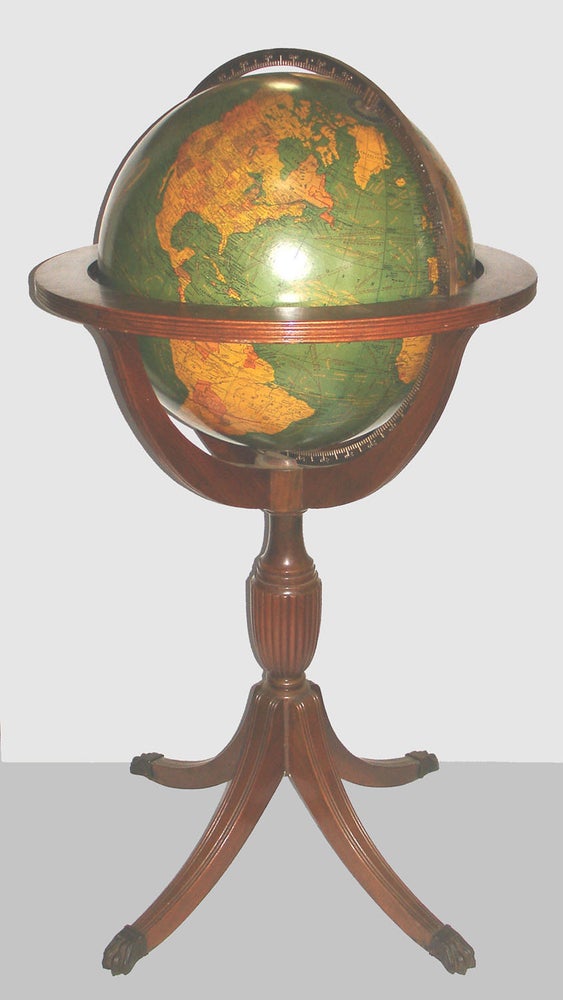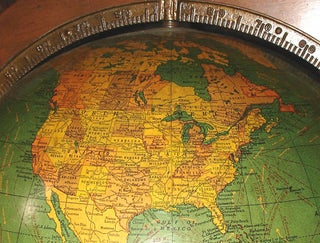16 inch/ Political/ Terrestrial Globe/ CRAM'S/ (Since 1867).
16-inches diameter; 40 inches total height. On mahogany four-legged Duncan Phyfe style stand. Globe and horizon generally excellent, unusually bright and clean, still with the expected overall light toning, fading, wear, soiling, scratches, areas of discoloration, irregularities to varnish.
A handsome full-sized floor globe on a traditional Duncan Phfye style stand. Oceans are green (blue which has yellowed over time), geographic entities are various shades of yellow and orange. Shipping lanes are marked with dashed lines and labeled with distances in miles. Ocean currents are indicated with yellow directional arrows. A reference key indicates the map scales and the symbols for warm and cold ocean currents, asserts that the spellings conform to official rulings adopted by the United States Geographic Board and Royal Geographical Society, and gives the model number, "No. 16." There is a figure-eight analemma in the Pacific Ocean.
Manchuria is shown as "Manchoukuo," as it was known after the Japanese invaded the area and established a puppet state from 1932 to 1945 (also sometimes spelled "Manchukuo"). Istanbul is shown, also indicating a date of after 1930, when the name change occurred. In addition, the globe shows Northern Territory in Australia, which replaced Central Territory on maps after 1931. Syria is labeled in parentheses "Fr. M." for French Mandate, which lasted until 1943. These and other geographical notations suggest that the globe was made in the 1930s, and no later than the early 1940s.
The stand is American, in the English taste, typical of this period. Such globe stands were replicas of George III globe stands made in London in the late 18th and early 19th centuries, but were commonly referred to as Duncan Phyfe style after the New York cabinetmaker who embraced the late Georgian style in producing tripod tables with bases in similar form to the globe stand, and other related furniture. The terrestrial globe is surmounted by a tin hour circle, in full cast iron meridian with raised numerals and encircled by an undecorated horizon band with reeded edge. The mahogany stand has a horizon band supported by four quadrants, a central turned standard with reeded baluster, on four molded downswept legs, ending in brass paw feet.
Sold


